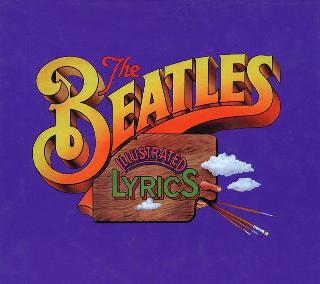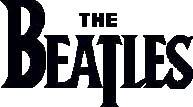Index
Home
Vorige
Do You Want to Know a Secret
Composer(s) : Lennon and McCartney
Year :
Chords/Tabs: Do You Want to Know a Secret
Notes on "Do You Want To Know A Secret" (DYWTKAS)
KEY E Major
METER 4/4
FORM Intro -> Verse -> Verse -> Bridge -> Verse -> Outro (fadeout)
GENERAL POINTS OF INTEREST
Style and Form
- The intro is slow, the verse long, and the bridge short. The form
is compact and the overall duration of the song brief, as well; a likely
consequence of the large amount of repetitious rhetoric built into the
verse section.
- No exaggeration, the lyrics here may nose out even
"Love Me Do" for
skimpiness, though the use of different material in both the intro and
the bridge makes up some of the deficit.
- The song fairly overflows with a number of leitmotifs all built out of
chromatic scale fragements of 3 or 4 notes; the rising lead guitar riff
at the end of the intro, a descending portion of the verse melody (on
the "woah" that precedes the word "closer"), and in the recurrent little
descending chord stream that appears in the second half of almost all
the odd-numbered measures of the verse.
Harmony
- The song is quite securely in E Major in spite of a firm modulation to
the axis of A Major/f# minor during the break. Allusions to the parallel
minor key of e in both intro and verse provide a touch of pathos as well
as harmonic variety.
- The single most unusual chord in the song is the "flat II", found here in
both the intro and the verse; we've seen this one before in
"Things We Said Today" and
"You're Going To Lose That Girl."
Arrangement
- The song leaves a lasting impresion of having been enwrapped in a haze of
gentle reverberation even though it was not literally nor entirely recorded
that way.
- George gets the first of his few chances to take the lead vocal in a Lennon-
McCartney tune. The composers themselves show up vocally in the form of an
old-fashioned "doo-wop"-like backing starting in the second verse.
- Like the piano in-lays of "Misery", the
overdubbed tapping of drum sticks
in the bridge is a musically small touch which is historically notable
because of the trend in recording/arranging practice it signals.
SECTION-BY-SECTION WALKTHROUGH
Intro
- The intro is not merely "adagio", but entirely "ad libitum"; my delineation
below of where the 4/4 measure boundaries are is purely a guess:
|e |a e |G |F B |
e: i iv i III flat II V
- The shift from e minor to E Major which occurs between intro and first
verse is exceedingly smooth because of the "parallel" relationship between
the two keys, but if you recall the first time you ever heard this song, it
still has the power to surprise.
- Though emotionally and compositionally simplistic on one level, that minor-
to-Major transition still effectively conveys the angst-cum-epiphanistic-
joy "we" all go through in the unique moment of timidly expressing a
burgeoning fondness.
Verse
- This verse has an unusual length of 14 measures and is designed as a
couplet of two uneven phrases which share a common beginning:
"Listen ..."
------------- 2 x -------------
m.1
|E g# g |f# B7 |E g# g |f# F |
E: I ii V I ii flat II
"Closer ..."
----------------- 2 x -----------------
m.7
|E g# g |f# B7 |A |B |
I ii V IV V
m.13
|c# |f# B |
vi ii V
- The first phrase is six measures and would seem to run harmonically
in circles if it were not for its surprise ending in which we find yet
another application of the chromatic chord stream cliche. Note how
the F chord is unusually placed on top of the note C in the bass; as
though Paul were uncomfortable with a certain awkwardness about the
chord progression and trying to paper it over a bit.
- The second phrase is eight measures and though it too starts off running
in the same tight circle, its harmonic rhythm broadens out into a deceptive
cadence on vi before cycling back again to V.
- The melody of this verse is just as repetitious as the chord changes,
and the falsetto flip in the last measure finally and satisfyingly opens
up the previously constricted pitch range.
- The chord stream of g# minor -> g minor -> f# is more coloristic than
"functional"; the ear comprehends the structural harmonic progression
as though from E in the first measure to f# in the second. The *other*
chord stream in measure 6 - 7 is actually more structurally significant than
the previous one in that one hears the F Major chord as a surrogate Dominant
with respect to the E (I) chord which opens the second phrase. Note
how the melodic use of C natural at this juncture creates an allusion
to the minor mode of e.
- The rhythm is in a shuffling beat throughout until the final four measures
where it's suddenly interrupted by syncopation (m. 11 - 12), which then
moderates to a pulsating bass drum beat before settling back to the shuffle.
- George's pronunciation of the word "ear" (especially in the first and third
verses) offers us what 'Simon Marshal' would someday describe as "the old
adenoidal glottal stop for our benefit".
Bridge
- This is one of the shortest bridges we've ever seen; only six measures long,
and built, just like the verse, out of two phrases unequal in length yet
sharing the same opening content:
------------- 2 x -------------
|A f# |c# b |f# |B |
f#: III i v iv i
E : IV E:ii V
- The harmonic transition into this section from the V chord on B which ends
the previous verse is somewhat abrupt though by no means rude; the pivot
for the modulation is not obvious to the ear, but at least it *is* a common
chord to both keys involved.
- The pivot back to the home key is much smoother. It's a rather superb example
of just how so-called pivot modulations work for those who have trouble
grasping the concept: note how when the f# chord is followed by the B Major
one, the ear retroactively reinterprets it as the ii chord of the original
home key of E.
- In the arrangment, the do-dahs are given a break in deference to George's
solo vocal. And Paul, having played up to this point a nicely elaborate
bassline, gets a little carried away in this section and winds up making
a mistake on the first c# chord, by playing a B natural which clashes with
the chord above it.
Outro
- The deceptive cadence near the end of the verse is leveraged and recycled
for the inevitable three-repeat coda.
- The song fades very rapidly and a surviving outtake reveals that the
studio performance of the official version actually ended, barely a few
seconds after our fade, with a complete ending on an added-sixth chord.
- That added sixth so nicely summarizes the song that it's especially
unfortunate they chose to mask it out. Looking back over the full length
of the piece, one notes how much the sonority of the added-sixth resonates
within it; e.g., the repeated appoggiatura of C#->B on the words "listen"
and "secret" in the verse, and the large number of deceptive cadences in
which you so strongly anticipate the next chord to be E, yet it turns out
to be (surprise!) c# instead. To the extent that this added-sixth has the
incidental sound of the I (E) and vi (c#) superimposed upon each other,
it makes for an effective harmonic double-entendre.
- BTW, Paul makes yet another mistake in the bassline of this section, analogous
to the one in the bridge.
SOME FINAL THOUGHTS
- The aesthetic of sentimental shy puppy love and gauzy soft focus is not one
to which the Boys were often drawn over the long run; Sweet and Cuddly
Moptops notwithstanding, it didn't suit them as a group. Even here, they
manage to rescue this one from drowning in its own cliches only by means of
an abundance of interesting details and a modicum of sincerity.
- Ironically, it's the more subtle aesthetic of repetition here, which you
would be tempted to denegrate offhand as a matter of lazy craft, which
provides one of the major sources of emotional realism and "sincerity" to
the song. I'd bet, for example, that anyone out there who relates to the
pre-confessional anxiety of the intro will also vouch for the corresponding
post-declaration euphoria in which all they wanted, even needed, to do was
repeat the same words of love like a mantra, endlessly without stopping.
Regards,
Alan (awp@bitstream.com *OR* uunet!huxley!awp)
---
"I don't really know, but it sounded distinguished like, didn't it ?" 081991#32
---
Copyright (c) 1991 by Alan W. Pollack
All Rights Reserved
This article may be reproduced, retransmitted, redistributed and
otherwise propagated at will, provided that this notice remains
intact and in place.
Ook op Please Please Me:
Ook op On Air - Live At The BBC Vol 2:
(c) 2024 Serge Girard


 (c) Alan Aldrigde, The Beatles Illustrated Lyrics
(c) Alan Aldrigde, The Beatles Illustrated Lyrics